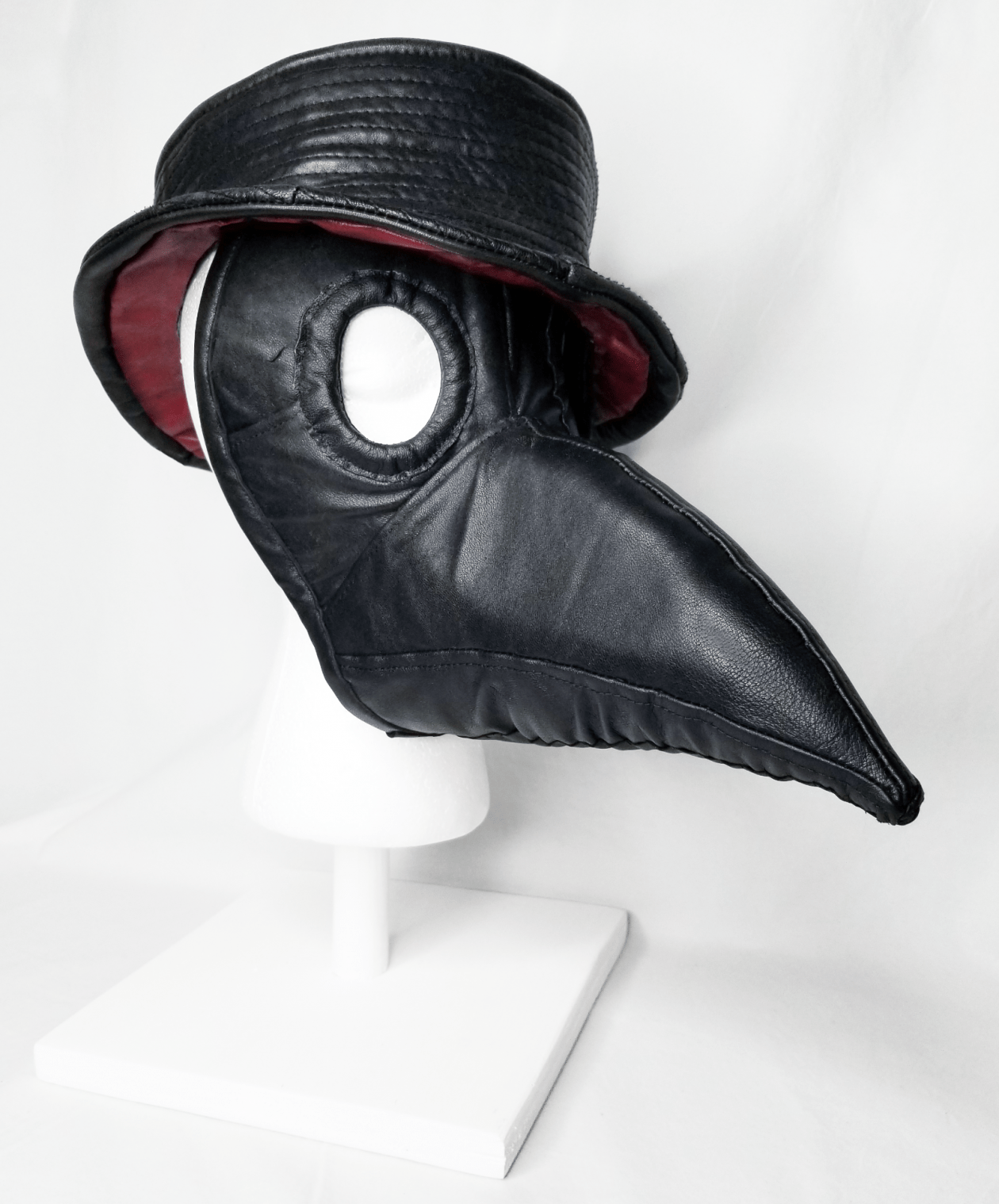The Plague Doctor
Hundreds of years ago, an early specialized form of personal protective equipment (PPE) emerged. Historical records describe the garb of doctors tending to patients during plagues to include beaked masks, oilcloth cloaks and hats, glasses, and using staffs or canes (Townsend, 1965). This beaked figure has transformed into a symbol in itself, and is by and large the inspiration for the mask silhouettes in this exhibition.

The Reaper mask
The Plague Doctor silhouetted mask is shown here accompanied by a small hat with red contrast brim. The mask and hat are made using upcycled materials: leather jackets from thrift stores and neoprene from a waist belt. The mask’s neoprene base is shaped into the Plague Doctor beaked style with an overlay of black leather. The mask pieces were cut from different pieces of leather, salvaged from thrifted jackets, and assembled using a combination of hand and machine sewing techniques. The hat is created from the collar and cuffs of the mask’s source jacket, highlighting the stitching details of the original garment. Leather pieces were assembled into the hat shape and finished with a contrasting deep red leather brim lining. The original hats are depicted as having wider brims, which has been updated in the Reaper mask look.


The Reaper mask without accompanying hat
References
Townsend, G. L. (1965, July). The plague doctor: An engraving by Gerhart Altzenbach (17th century). Journal of the history of Medicine and Allied Sciences, 20(3), 276.
This project is funded in part by the Cornell Council for the Arts. 

Leave a comment